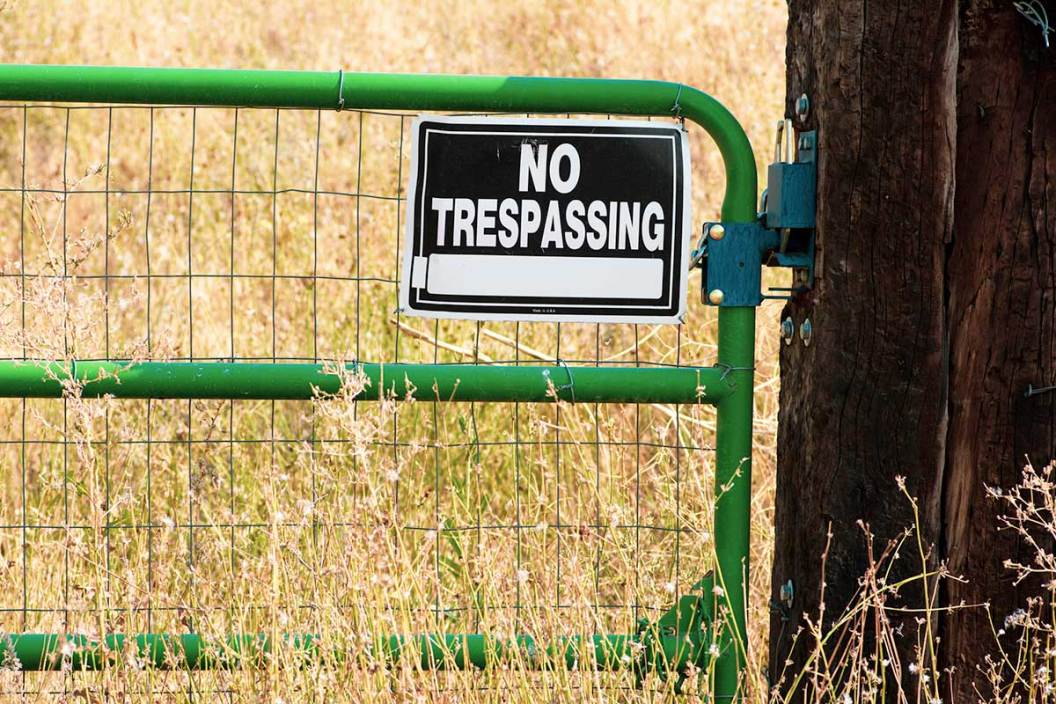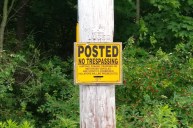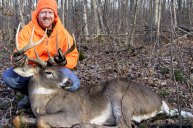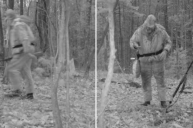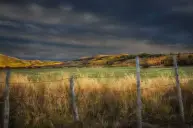Here are the New York trespassing laws as they pertain to folks who want to hunt or fish in the Empire State.
On any state land managed by the New York State Department of Environmental Conservation, (NYSDEC) including Wildlife Management Areas and State Forests, the boundaries are well marked with DEC signs and usually open to hunting and fishing.
For those who wish to hunt or fish on private lands, you will need to be thoroughly aware of the laws that pertain to private property and what they mean. As in any state, there are varying degrees of criminal trespass making it either a Class A Misdemeanor, Class B Misdemeanor, a criminal trespass in the second degree, or even a first degree criminal trespassing penalty, depending on the level of the offense.
Property owners also need to be aware of these basic laws if they intend to post their land properly in the eyes of the law. Let's look at where your posted signs should be located, how far apart, and what size they can be among other stipulations.
Posted Land
The DEC has allowed for anyone who "posts" their private property in New York in some fashion, by using homemade signage, and signs bought from hardware or other outdoor stores to do so under their own supervision or can grant permission to do so to another person who has permission to use the land in some way. By using this method, landowners in the state can serve notice that they have stated that "All persons are prohibited from entering, remaining unlawfully or engaging in any activity which has been prohibited by posting or written notice."
This can mean anyone looking to cut down trees, use snowmobiles or ATVs, hunt, fish, trap, or hike. In some states like Texas, simple purple paint sprayed or painted onto trees or posts is the same thing: a legitimate sign that the property is posted as private land.
Sign Details
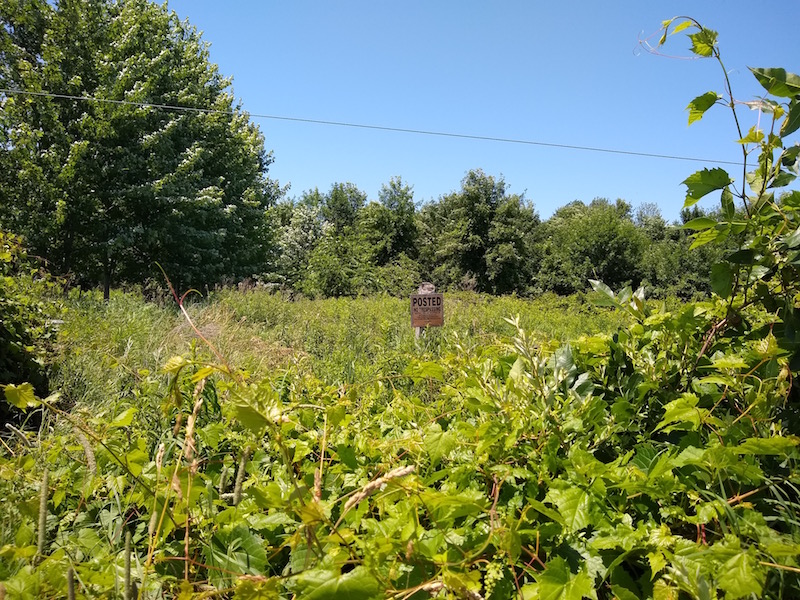
Craig Raleigh
The DEC is fairly specific in their requirements to properly post private lands saying,
"Signs must be a minimum of 11 inches by 11 inches. They also must bear the name and address of the owner, lawful occupant or other person or organization authorized to post the area. The sign must bear a conspicuous statement which shall either consist of the word "POSTED" or warn against entry for specified purposes or all purposes without the consent of the person whose name appears on the sign. These words must cover a minimum space of 80 square inches (about 9 by 9 inches) of the sign."
At least one of your posted signs must be set on each side of the property to be legally marked and on each side of all corners that can be "reasonably identified." The DEC states that signs "shall be no more than 660 feet apart, set close to or along the boundaries of the protected area." The signs must be as conspicuous as possible in the woods: high enough and close enough together to be seen.
Illegible, ruined, or missing signs must be replaced at least once a year. One confusing thing about these requirements that appears on another DEC page states that, "There is no requirement that signs be "seen," and in fact, the land is still posted for a period of one year even if the signs are illegally removed by unauthorized persons the day they are put up." This means that a trespasser saying that he or she did not see the signs is not a worthy excuse under the law for crossing the property line without permission.
One common misconception is that a property owner must have his or her phone number placed on their posted signs, but nowhere on the DEC website does it state such a stipulation.
Legal Restrictions
Trespassing on areas posted against trespass in New York, according to the Environmental Conservation Law, is punishable by a fine up to $250 and/or up to 15 days in jail. Any person who illegally trespasses in New York and damages property, posted signs, livestock, buildings, vehicles, farm equipment, or other items can be assessed damages as determined by the court in addition to the aforementioned penalties, based on the level of damage.
Landowners are encouraged to report all illegal activities by writing down or memorizing the event and contacting the proper authorities. In the case of obvious hunting, fishing, trapping, or other environmental crimes such as disturbing wildlife, people are asked to contact an Environmental Conservation Officer (ECO), who has the best chance of prosecuting an outdoor related crime.
Trespassing in New York is illegal even on unposted private property. The laws pertaining to this get more specific in that "a landowner or other authorized person may issue written notice to another individual informing them that they are prohibited from entering the property." This should be delivered by certified mail.
Other Things You Need To Know
A legal hunting, fishing, or trapping license does not give you the right to trespass on private property in New York. It is the responsibility of each individual to find out who the land owner is and ask their permission whether the property is posted or not. The New York State Penal Law makes it an offense to enter any land without permission of the landowner.
A great rule of thumb for us all to remember is that every piece of property is owned by somebody. The lack of posted signs, no trespassing signs, fences, or other man made objects does not imply that you may enter to hunt, fish, or trap. It is the responsibility of the public to obtain permission to enter private lands to hunt, fish the waters, or trap the creeks, streams, or woodlands.
One last thing that the NYS DEC states quite clearly, and which resonates with all of us is this:
"If you shoot a deer and it runs onto posted property, you do not have the legal right to go on the property to retrieve it. You should locate the landowner, explain the situation, and ask permission. If the landowner refuses, the hunter will not be able to enter the property. The DEC cannot compel a landowner to grant access. If the hunter has reason to believe that the landowner intends to illegally possess the deer, it should be reported to the nearest Environmental Conservation Officer."
It is a difficult thing to accept, but if you put an arrow, slug, or rifle round into that big buck you've been chasing all these years and it runs over onto your neighbor's property, he or she can legally tag it and call it their own. A downed deer isn't worth a trespass charge.
Looking for a new way to display those antler sheds? Go to Rack Hub and use the coupon code Craiger. Be sure to follow my webpage, or on Facebook and YouTube.
NEXT: TAKE MY QUIZ TO SEE IF YOU ARE INDEED AN OCDH: OBSESSIVE COMPULSIVE DEER HUNTER
